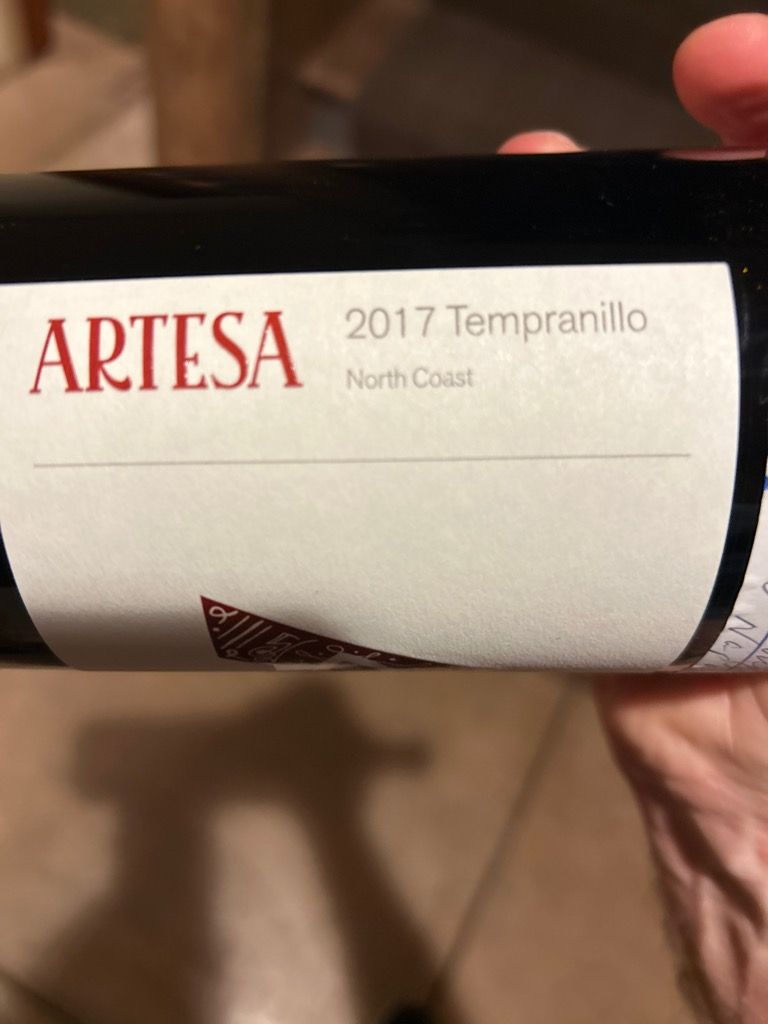
External search
Google (images)
Wine Advocate
Wine Spectator
Burghound
Wine-Searcher
Vintages
2018
2017
2014
2013
2012
2011
2010
2009
2008
2007
From this producer
Show all wines
All tasting notes
|
| Drinking Windows and Values |
| Drinking window: Drink between 2021 and 2024 (based on 31 user opinions) |
| Community Tasting History |
| Artesa Producer website
In the 1980s, the historic Spanish winemaking family Codorníu Raventós began to acquire and develop vineyard land in the Carneros region of Napa Valley.
Opened in 1991 as Codorníu Napa, a sparkling wine house, the winery ultimately transitioned to producing still wines as successive vintages revealed the
quality and potential of the family’s vineyard holdings. The winery was renamed Artesa – Catalan for “handcrafted” – in 1997, and has since become a leading
producer of artisan wines from the varietals for which Carneros and Napa Valley are best known: Chardonnay, Pinot Noir and Cabernet Sauvignon. Codorníu
Raventós is still family owned and is the oldest company in Spain with a winemaking legacy in the Penedès region near Barcelona that dates back to 1551.
Today, Codorníu Raventós owns wineries in Spain, Argentina and California, and brings generations of expertise to Artesa.Tempranillo Varietal character (Appellation America) | TAPAS: Tempranillo Advocates, Producers and Amigos Society
Tempranillo is the premium red wine grape variety from the Rioja and Ribera del Duero region in Spain. Tempranillo's aromas and flavors often combine elements of berryish fruit, herbaceousness, and an earthy-leathery minerality. Being low in acidity and sugar content, it is commonly blended with Carignan (Mazuela), Grenache (Garnacha), Graciano, Merlot and Cabernet Sauvignon.
WineAccess
The varietal is at its best in top Riojas, where oak aging is employed to generate increased complexity and harmony. From the best sites, these wines can be remarkably concentrated with great aging potential. New wines from this region are darker, and more robust, with more dynamic primary fruit flavors than traditionally styled examples. These wines seem to reflect the influence of Spain's other key region for Tempranillo, Ribera del Duero. Regardless of style, Riojas tend to be medium bodied wines, with more acid than tannins. These wines generally feature Tempranillo blended with Garancha, Mazuelo, and Graciano. For these wines, there are three quality levels, which will appear on the label. Everyday drinking wines fall under the category of "Crianza", "Reserva" denotes more complex and concentrated wines, and "Gran Reserva" refers to the most intense wines, made only in the best years.
The same labeling scheme applies to wines from Ribera del Duero, which, like Rioja, is dominated by Tempranillo and shares similar blending grapes. Again, Ribera del Duero wines are generally darker and more powerful than the most traditional Riojas. These wines also generally see less oak treatment than Riojas. From Rioja, we like wines from Allende, Marqués de Cáceres, Montecillo, and Cune. In Ribera del Duero, consider Dominio de Pingus, Emilio Moro, Convento San Francisco, and Pesquera.
Pair older-style Rioja with simple meats like chicken, leg of lamb, and pork loin. However, the newer style of Rioja and Ribera del Duero works especially well with bolder meat dishes or an aged Spanish cheese like Manchego or Idiazabal. USAAmerican wine has been produced since the 1500s, with the first widespread production beginning in New Mexico in 1628. Today, wine production is undertaken in all fifty states, with California producing 84% of all U.S. wine. The continent of North America is home to several native species of grape, including Vitis labrusca, Vitis riparia, Vitis rotundifolia, and Vitis vulpina, but the wine-making industry is based almost entirely on the cultivation of the European Vitis vinifera, which was introduced by European settlers. With more than 1,100,000 acres (4,500 km2) under vine, the United States is the fourth-largest wine producing country in the world, after Italy, Spain, and France.California2021 vintage: "Unlike almost all other areas of the state, the Russian River Valley had higher than normal crops in 2021, which has made for a wine of greater generosity and fruit forwardness than some of its stablemates." - Morgan Twain-Peterson Sonoma CountyMendocino CountyAlexander Valley Alexander Valley Winegrowers Association | Wikipedia
|
|




